How do our ai solutions support the cosmetics industry in their major transformations?
Analysis of the impact of the 2020 anti-waste law, the agec law, in the cosmetics industry
Faced with the climate emergency, the French law n°2020-105 Anti-Waste for a Circular Economy (AGEC) of February 10, 2020 will deeply transform the French economy by 2040. The cosmetics sector will be particularly affected by this law. It will no longer be possible to sell rinsed cosmetics containing microplastics and other substances with negative impacts on the environment, nor to display on labels the presence of endocrine disruptors. Brands will have to rework the formulas and labels of products that do not comply with this law.
The timeline for compliance extends to 2040, with major deadlines in 2022 and 2026.
Compliance calendar

Thanks to our Artificial Intelligence solution "Ingredient Screener" developed by our Data Science teams, we have identified the major impacts and the most important transformation projects for the various players in the cosmetics industry, for the Consumer, Parapharmacy and Luxury markets.
Our approach: Rely on a Data Science solution combined with our knowledge of the cosmetics sector to measure the impacts of the AGEC law
Understanding the need: A first part that will allow us to define our data science methodology in a relevant way.
The study of the AGEC law allowed us to identify the main measures with a significant impact on the cosmetics industry and to draw up a chronology:
- Since January 1, 2022, actors in the cosmetic industries are obliged to inform consumers about products containing endocrine disruptors for transparency purposes by making this information available in open data (art. 13).
- In addition, as of January 1, 2026, the industry will be prohibited from selling rinsed cosmetic products containing microplastics, substances that are found in the seas and oceans and are harmful to the environment (art. 82).
From these elements we were able to define the scope of our analysis: our study will therefore focus on these two target ingredients: microplastics and endocrine disruptors.
Based on the composition of more than 10,000 cosmetic products representative of the current market, we will be able to identify the categories of products most impacted, according to the typologies of components.
We rely on our Ingredient Screener solution to measure the impact of this law.
Our Artificial Intelligence solution: Ingredient Screener
Ingredient Screener is a solution developed and industrialized by our Data Science teams that allows us to cross-reference cosmetic product data with data provided by the scientific community and by regulations in order to provide a regulatory and reputational score on each cosmetic product. The right configuration of the solution will allow us to analyze the composition of several thousands of products, and thus understand in depth the impact of the AGEC law on the cosmetics industry. The illustration below shows the different steps of our global approach:
Use of Ingredient Screener in the AGEC study methodology
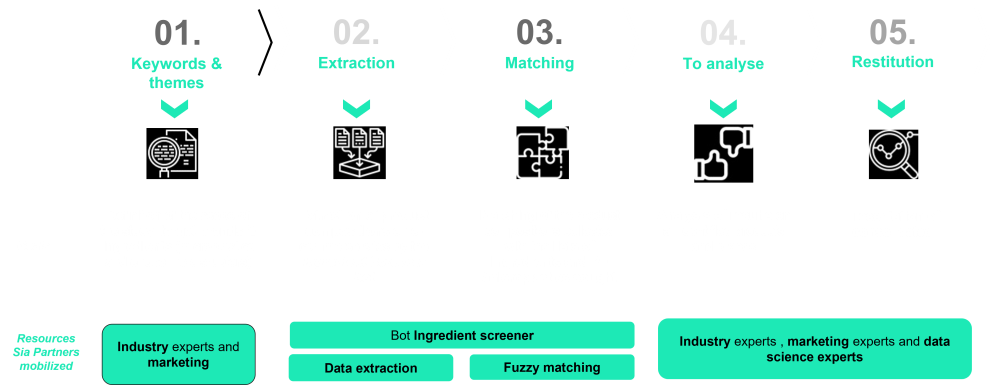
Extraction
In a second step, we collected three types of data necessary for our analysis:
- Composition of cosmetic products: The list of INCI* codes of the ingredients composing several thousand cosmetic products.
- List of microplastic ingredients: Microplastics are small particles (less than 5 mm in size) of plastic material.
- List of endocrine disruptors: Endocrine disruptors are substances capable of interfering with our hormonal system, resulting in health effects. To formally identify such ingredients requires extensive scientific studies, over several years. There is no official and exhaustive list of all components identified as endocrine disruptors or microplastics. We have established a consolidated list of these two types of substances by retaining only the ingredients that appear frequently in the various scientific studies and official lists of European countries.
The calculation of the Levenshtein distance at the heart of our Fuzzy-matching algorithm
The names of ingredients and the compositions of cosmetics are raw data that are difficult to analyze, because they are sequences of non-standardized character strings. The names of the ingredients differ: the INCI code (International Nomenclature of Cosmetic Ingredients) is displayed on the majority of the sites, but sometimes more generic names or scientific names are used.Moreover, our algorithm has to get past possible spelling mistakes, abbreviations, etc. The key step of our approach is the reconciliation between our different data sources. For this, we use the NLP method of fuzzy-matching.
More specifically, the Levenshtein distance allows us to quantify the difference between two strings. It is equal to the minimal number of characters that must be deleted, inserted or replaced to go from one string to the other.
Distance between the strings "Levenshtein" and "Levinsteihn", showing the substitution, deletion and insertion cases
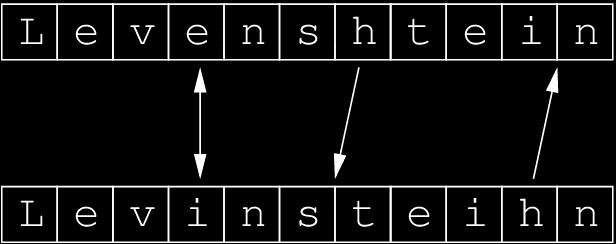
For example, the strings "1,2 Hexadeciol" and "1-2 Hexadeciol" are very close because only one character is different (the comma has become a dash). Conversely, the character strings "Silicon" and "Calcium Silica" will have a Levenshtein distance too big to be considered as referring to the same ingredient.
This approach thus allows us to find strings that correspond to an approximate pattern rather than an exact match. It is thus possible to match data from different horizons, and in our case to analyze the composition of cosmetic products and to carry out an inventory of the products on the market with respect to microplastic ingredients and endocrine disruptors.
Analysis and aggregating the results
The reconciliation between our different data sources allows us to calculate the global proportion of cosmetic products impacted by the AGEC law, i.e. containing at least one ingredient identified as a microplastic or endocrine disruptor. This global vision is completed by a more detailed consolidation of the results: our study allows us to understand which categories/types of products and brands are the most impacted. Finally, it is also possible to identify the most frequently used problematic ingredients.
The results of our study:
The results of our study show that 40% of the products analyzed contain at least one ingredient identified as microplastic.
Microplastics are highly represented in rinsed products: 41% of shampoos and 75% of hair colors contain them.
Proportion of products containing microplastics. Vision by product category
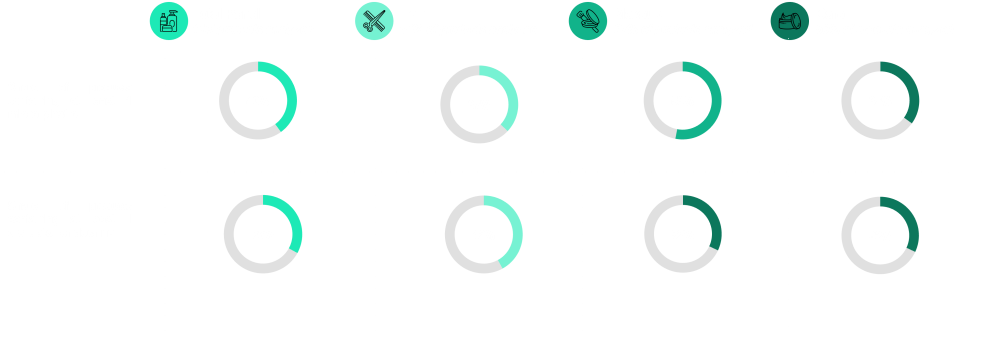
Regarding endocrine disruptors, our study shows that 33% of the products analyzed contain at least one ingredient identified as an endocrine disruptor. These products will have to have their composition modified. The analysis by type of product shows that the hair care products are globally the most impacted.
Proportion of products containing endocrine disruptors. View by product category
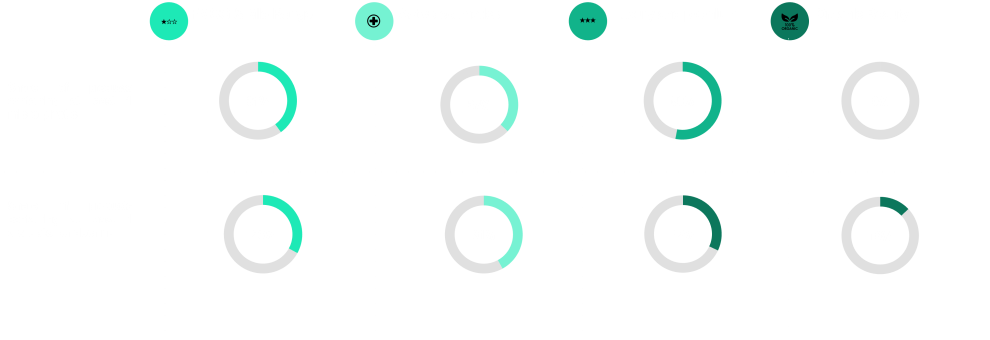
Polyethylene Glycol (microplastic), Benzyl Salicylate and BHT (endocrine disruptors) are the most present targeted ingredients in the panel of analyzed cosmetics.
Proportion of products containing microplastic and endocrine disruptor ingredients. Vision by product category

Finally, products in the Luxury & Premium segment are the most impacted by the AGEC law. One out of two products in this segment contains microplastics, compared to 31% for consumer products for example, and 42% of products contain endocrine disruptors.
Proportion of products containing microplastics. Vision by product segment
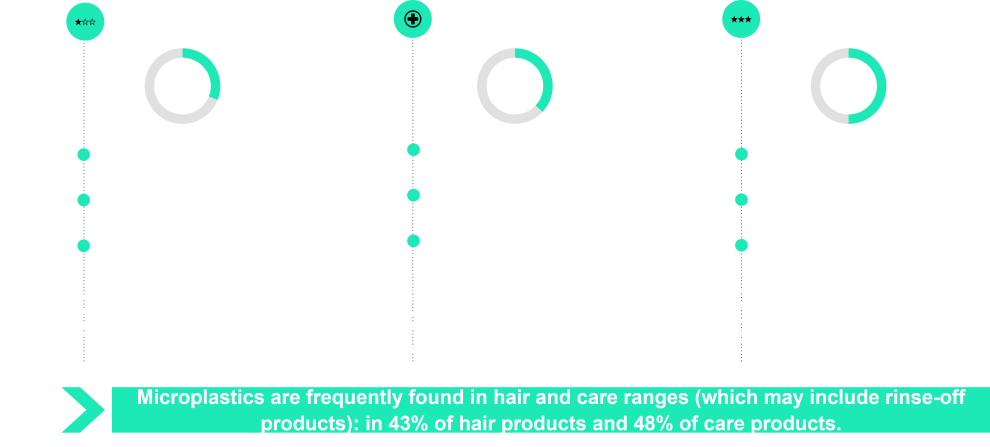
The AGEC law: what future for the cosmetics sector?
The cosmetics sector, which has already been disrupted in the past by legislation, new user tools (Yuka, Nutri-Score, etc.) and scientific research, will be strongly impacted by this new regulation.
Reformulation projects have already been launched in order to replace ingredients with equivalent substances while guaranteeing continuity of service and offers for the consumer. However, it will not always be possible or profitable to reformulate all products on the market. The chemical combination of a product can be complex and replacing an ingredient with a substitute will not always be sufficient to maintain the quality of the cosmetics. It will sometimes be easier to wait for the natural end of life of the product.
This implies for the companies of the sector to use up existing stocks to avoid financial penalties, product recalls and destocking for packaging. A finer optimization of the logistics and supply of each point of sale, via for example the use of constrained optimization algorithms (more information on our Optiwise solution on this link), but also a structuring of the pricing strategy will allow to minimize the unsold products.
The Luxury & Premium sector is the one most affected by the ban on microplastics, but it is also the most important sector in terms of turnover. The major groups and luxury houses will have to face challenges that will impact their revenues but also their Research & Development budget.
Many products such as those we know today will disappear. The future of the cosmetics market is therefore uncertain and still holds surprises. It will be an opportunity for new brands to develop, in accordance with consumers' expectations as well as with the different regulations.
The complete results of our study on the AGEC law are available via this link.
*INCI : The International Nomenclature of Cosmetic Ingredients (INCI) was developed in 1973 by the Cosmetic, Toiletry and Fragrance Association (CTFA), an American association of cosmetic manufacturers. In Europe, its use is mandatory for cosmetics since 1998



